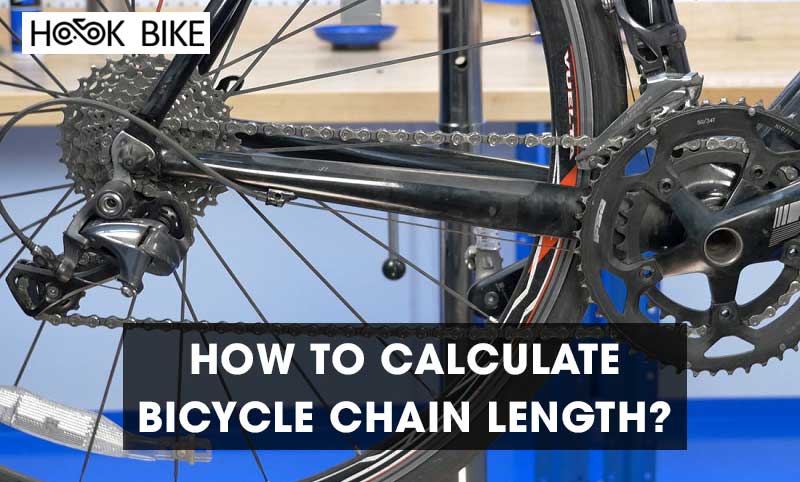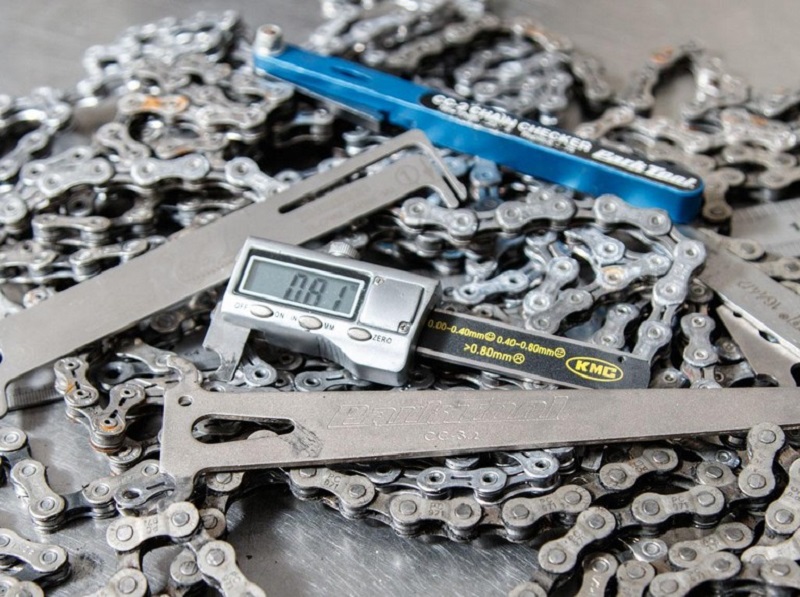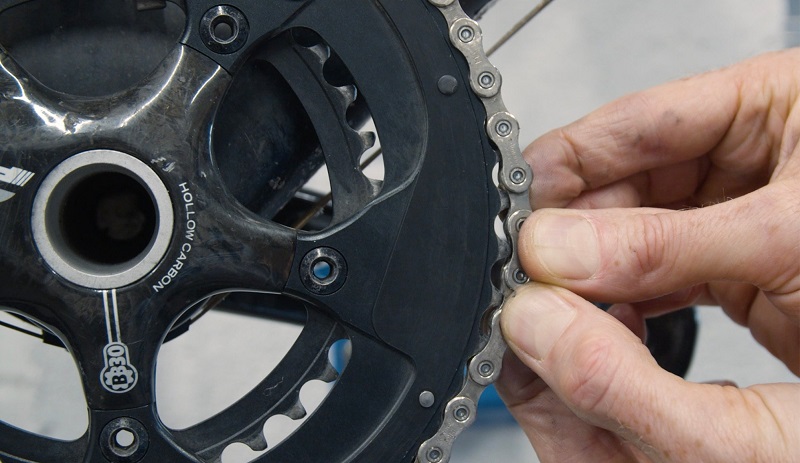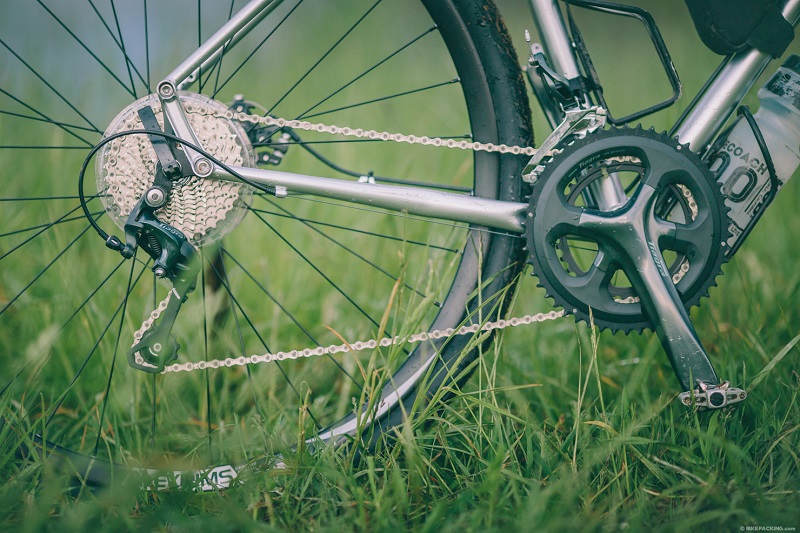Guidance
How to Calculate Bicycle Chain Length?
The bicycle chain is an integral component of any bicycle, ensuring smooth power transmission from the pedals to the wheels. One of the key factors for optimal performance and durability is ensuring that the chain is of the appropriate length. A chain that’s too long or too short can lead to shifting issues, premature wear, or even damage to your bicycle. In this comprehensive guide, HookBike will delve into the steps and considerations needed to accurately bicycle chain length calculator.
Understanding the Importance of Proper Bicycle Chain Length
The proper length of a bicycle chain is critical for both performance and safety. A chain that’s too long or too short can lead to shifting problems, premature wear, and even potential damage to the bicycle. Here are some reasons why it’s essential to ensure your bicycle chain is of the correct length:
Optimal Shifting Performance: The main function of the chain is to shift gears smoothly. A chain that is the correct length will engage the cogs and chainrings accurately, ensuring seamless transitions between gears.
Safety: A chain that’s too short can put excessive tension on the rear derailleur, especially when shifting to larger cogs or chainrings. This can lead to the derailleur being ripped off or damaging the derailleur hanger. Conversely, a chain that’s too long can result in slack, which can cause the chain to fall off or get jammed.
Efficient Power Transfer: Cyclists want as much of their pedaling energy as possible to be converted into forward motion. A properly tensioned chain will ensure that power is efficiently transferred from the pedals to the wheels.
Minimized Wear: An incorrectly sized chain can lead to accelerated wear on the chain itself, as well as on the cogs and chainrings. This wear can make the drivetrain noisy, reduce its lifespan, and can even lead to skipping or jumping of the chain under load.
Protection of the Frame: A chain that is too long and has too much slack can potentially slap against the bicycle’s frame, especially during bumpy rides. This not only results in noise but can also damage the frame’s paint or even the frame itself over time.
Cross-Chaining: A chain that’s of the correct length will reduce the chances of cross-chaining, which is when the chain is on the smallest ring in the front and the smallest cog in the back, or vice versa. This extreme chain angle increases wear and can reduce shifting performance.
Suspension Performance (for full-suspension bikes): On a full-suspension mountain bike, the chain length can affect the bike’s suspension performance. An incorrect chain length can change the bike’s pedaling characteristics, such as pedal bob.
Ensuring that your bicycle chain is the correct length is essential for optimal performance, safety, and the longevity of your drivetrain components. If you’re unsure about your chain length, it’s always a good idea to consult with a reputable bicycle mechanic or shop.

How to Calculate Bicycle Chain Length?
Calculating the correct bicycle chain length is crucial for the optimal functioning of the bike’s drivetrain. Here’s a step-by-step guide on how to calculate bicycle chain length:
A. The “Big to Big” Method
This is one of the most common methods for determining chain length:
- Shift the chain onto the largest front chainring and the largest rear cog.
- Pull the chain tight, and find the point where the two ends could be joined, ensuring that there are no slack points.
- Add two links (one inch) to this length. This is your optimal chain length.
B. The “Small to Small” Method
This method is less commonly used but can be helpful in some situations:
- Place the chain on the smallest front chainring and the smallest rear cog.
- Pull the chain tight, ensuring there’s no slack.
- The point where the derailleur jockey wheel is vertical is the optimal length. If it’s forward or backward, adjust accordingly.
C. Using a Chain Length Calculator
Several online tools and apps can do the calculation for you based on your bike’s specifications. Input details like chainring sizes, cog sizes, and chainstay length, and these tools will provide an accurate measurement.
See more: how to measure a bike chain

Note:
After calculating and adjusting the chain length, always check to make sure the rear derailleur can handle the chain slack in the smallest cog-chainring combination and has enough tension in the largest cog-chainring combination.
Remember that chains come with a specific number of links. When you “cut” or “break” the chain, you’re essentially removing links to adjust its length. Always use a proper chain tool for this process.
If you’re not comfortable with these procedures, it might be best to have a professional bike mechanic adjust your chain length to ensure the safety and longevity of your drivetrain.
Factors Influencing Chain Length
The length of a bicycle chain isn’t arbitrary; several factors determine the appropriate length for a particular bike setup. Here are the key factors that influence bicycle chain length:
Chainstay Length
Bicycles with longer chainstays generally require longer chains.
Number of Gears
A bike with more gears, especially in the rear, might need a slightly longer chain to accommodate the range of shifting.
Chainring Size
Larger chainrings can require a longer chain, especially if there’s a significant size difference between the largest and smallest chainring.
Suspension System
Full-suspension bikes can affect chain length due to the movement of the rear triangle. Always consider the bike’s full compression when determining chain length.
While many of these factors can be standardized or addressed with manufacturer guidelines, some depend on personal preference or specific bicycle setups. If unsure, consulting with a knowledgeable bike mechanic is advisable to ensure optimal performance and drivetrain longevity.

Maintenance Tips for Longer Chain Lifespan
Proper maintenance of your bicycle chain can significantly extend its lifespan, reduce wear on other drivetrain components, and ensure smooth and efficient operation. Here are some maintenance tips to prolong the life of your bicycle chain:
Regular Cleaning
- Use a chain cleaning device or a brush to scrub off dirt, grime, and old lubricant. For a deeper clean, remove the chain and soak it in a degreaser.
- After cleaning, always rinse the chain with water to remove any leftover cleaning solvents and thoroughly dry it.
Lubrication
- Always apply a suitable lubricant after cleaning the chain. There are different lubes for various conditions – wet lube for rainy or muddy conditions and dry lube for dry and dusty conditions.
- When lubricating, apply lube to each chain link. Spin the pedals backward several rotations to work the lube into the chain.
- Wipe off any excess lubricant with a clean rag. Excessive lube can attract dirt and grime.
See more: how to clean bicycle chains

Check for Chain Stretch
- Over time, chains wear out and “stretch” (it’s not actual stretching; the pins and bushings wear, which elongates the chain). Use a chain checker tool or ruler to measure chain wear.
- If the chain is excessively worn, it’s crucial to replace it to prevent accelerated wear on the cassette and chainrings.
Avoid Cross-Chaining
Cross-chaining occurs when you’re in the big chainring and the biggest cassette cog or the smallest chainring and the smallest cassette cog. This places the chain at an extreme angle, causing accelerated wear. Shift gears to avoid these combinations.
Regularly Inspect Chain for Damage
Check for stiff links, rust, cracks, or other damages. A stiff link can often be identified when the chain doesn’t run smoothly through the derailleur. Fix any issues immediately to prevent further damage.
Shift Gently
Try to ease off your pedal power when shifting gears, especially under heavy loads. Forceful shifting under high tension can cause chain damage.
Keep the Drivetrain Clean
A clean cassette, chainrings, and derailleur pulleys reduce the amount of grit and grime that can wear out a chain. Clean them regularly, especially after rides in wet, muddy, or dusty conditions.
Use the Right Chain for Your Bike
Make sure you’re using the correct chain width and type for your bike’s drivetrain. A mismatch can lead to accelerated wear and poor shifting performance.

Adjust Derailleurs Properly
Ensure your front and rear derailleurs are correctly adjusted. Misaligned derailleurs can cause the chain to rub, skip, or even fall off, leading to increased wear.
Replace Chain in Pairs with Cassette
Since chains and cassettes wear together, sometimes it’s beneficial to replace them as a pair. If you put a new chain on a worn-out cassette, it might not mesh correctly, leading to skipping and accelerated wear.
By following these maintenance tips, not only will your chain last longer, but you’ll also enjoy a smoother, quieter ride and extend the life of your entire drivetrain.
Conclusion
Calculating the correct bicycle chain length is crucial for the performance, safety, and longevity of your bike. Whether you’re a professional cyclist or a casual rider, understanding how to determine the right chain length can save you from potential mechanical problems and ensure a smooth ride. Always refer to your bicycle’s manual or consult with a local bike shop for specific recommendations.

